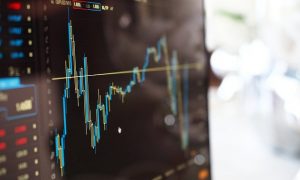Defining derivatives and options
Now we are going to discuss investment vehicles that are derived from others, appropriately called derivatives. Investors do not own the underlying asset, but bet on how that asset will perform.
Options are a common type of derivative. In 1973 the Chicago Board of Trade created the Chicago Board Options Exchange, which at first operated out of an old cloak room off the CBOT trading floor. The CBOE traded listed stock options. Unlike futures, options were not a commitment but gave the buyer an option to buy a stock for a certain period of time.* The option is based on the stock, called “the underlying.”
Options: Example A
Let’s say it is March 10, 2017. You’ve been reading about some new products Apple is to announce in the next few months and you think it would be a good investment. The stock is trading at $138, so one hundred shares will cost you $13,800. You aren’t working on a reporter’s salary so you have the money. But you know you also have an income tax bill to pay next month and if you buy the stock you won’t have enough cash on hand to make that payment.
You could borrow to buy the stock. That is called buying on margin. But the current margin requirement, set by the Federal Reserve’s Regulation T, is 50 percent, which means you’d have to put up $6,900. That’s still too much. You look to the CBOE, where you find a July ’17 AAPL 140 Call is trading at $5.70. You buy one. Now you have spent $570 and own the right to buy, at any time between now and July 21, 2017, 100 shares of AAPL for $14,000.
If the stock soars in the near term, you will reap some of the reward. But if the price of Apple stays below $140 your option will be worthless. You will be out your $570. To make money, the price of Apple when you exercise the option must be greater than the “strike price,” $140, plus the premium, $145.70 in our example.
Calls, Puts and Risk
That is a lot to absorb but it forms the base for understanding the entire realm of derivatives. And today derivatives are being used by public investors as well as professionals.
The option described above is known as a “Call”: You have the right, but not the obligation, to “call” the stock away from whoever wrote the option. You were the buyer. Someone else had to have been the seller. So someone else judged that the price of Apple will not rise above $145.70 between March and July and she will profit at your expense.
Remember, she can be required to deliver 100 shares of Apple at any time during the contract period. If she owns the stock she has written a “covered call.” If not, it is a “naked call” and she may have to buy it on the open market to satisfy your demand. Your risk is limited to the premium paid for the option. If she’s written a naked call her risk could be unlimited. Your investment is conservative. Hers could be very risky.
Not only can you buy or write a “call” option. You can buy or write a “put” option, the inverse, granting the right to sell stock at a set price for a period of time. This is a vehicle for people who believe a company’s shares will decrease, at least in the near term. Over time the art of options trading has evolved and textbooks have been written on sophisticated strategies with great names. Try “butterfly spread” for example. Different strategies have different risk profiles.
Measuring option value
The model for computing the “proper” value for an option resulted in a 1997 Nobel prize for Fischer Black and Robert C. Merton, with an acknowledgement for Myron Scholes, who died in 1995. The Black-Scholes model is a partial differential equation (I thought of showing it here but I’m just not that cruel). Today computers are programmed to constantly monitor market deviations from expected values and trade accordingly. In 1973, before such computer power was available, traders worked more on instinct. I swear I’ve met traders who can solve the equations in their head.
Especially popular today among many investors are options on indexes, allowing one to speculate, for example, on the Standard and Poor’s 100 index, effectively “betting” on the market as a whole. There are even options on futures contracts.
These exchange-traded options are all standardized contracts, traded on regulated exchanges and backed by clearing corporations which stand ready to step in if a party is unable to meet his obligations. But derivatives are also used to generate all kinds of unregulated products designed for so-called sophisticated investors. These are the kinds of products which have historically caused trouble, as we’ll discuss in a future post.
* Some argue that futures contracts are derivatives since they represent a promise to deliver a commodity in the future rather than the commodity itself. I disagree. In my Chicago days, reporters granted the coveted badges allowing us on the exchange floor where we could interview traders used to joke about keeping our hands in our pockets least a random motion be mistaken for a trading signal and we’d wake up one morning to find a hundred bushels of corn on our front lawn. Seemed real enough to me.
Reporter’s Takeaway
• Derivatives are investment instruments based on other investments; options are one type of derivative, while allow investors to bet on whether a stock value will rise or fall in a certain period of time.
• An investor buying a “call” option believes a stock will rise in value. An investor buying a “put” option believes shares will decrease in value.
• Listed options and futures contracts are backed against default by clearing corporations, in case a party is unable to meet his obligations.











